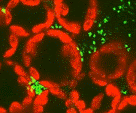Plant Pathology, Department of

Department of Plant Pathology: Faculty Publications
Document Type
Article
Date of this Version
2016
Citation
PLANT HEALTH PROGRESS, 2016, Vol. 17, No. 4, pp. 250-253
DOI: 10.1094/PHP-RV-16-0046
Abstract
Multiple traditional species names for plant pathogenic fungi have been supplemented with new names that delimit formerly cryptic species. In separate instances, isolates within a species are clearly differentiated by both phylogeny and distinctive pathogenic traits and are assigned sub-specific designations. These new species names and the sub-specific designations are both cases of cryptic species that are, in some instances, relevant and/or critical for plant disease management. Here we provide examples of such instances in which newly described taxa differ from the original (“parent”) in phenotypic traits of importance to plant disease management: host range, fungicide sensitivity, environmental niche, metabolite production, regulatory status, or other attributes.


Comments
This article is in the public domain and not copyrightable. It may be freely reprinted with customary crediting of the source. The American Phytopathological Society, 2016